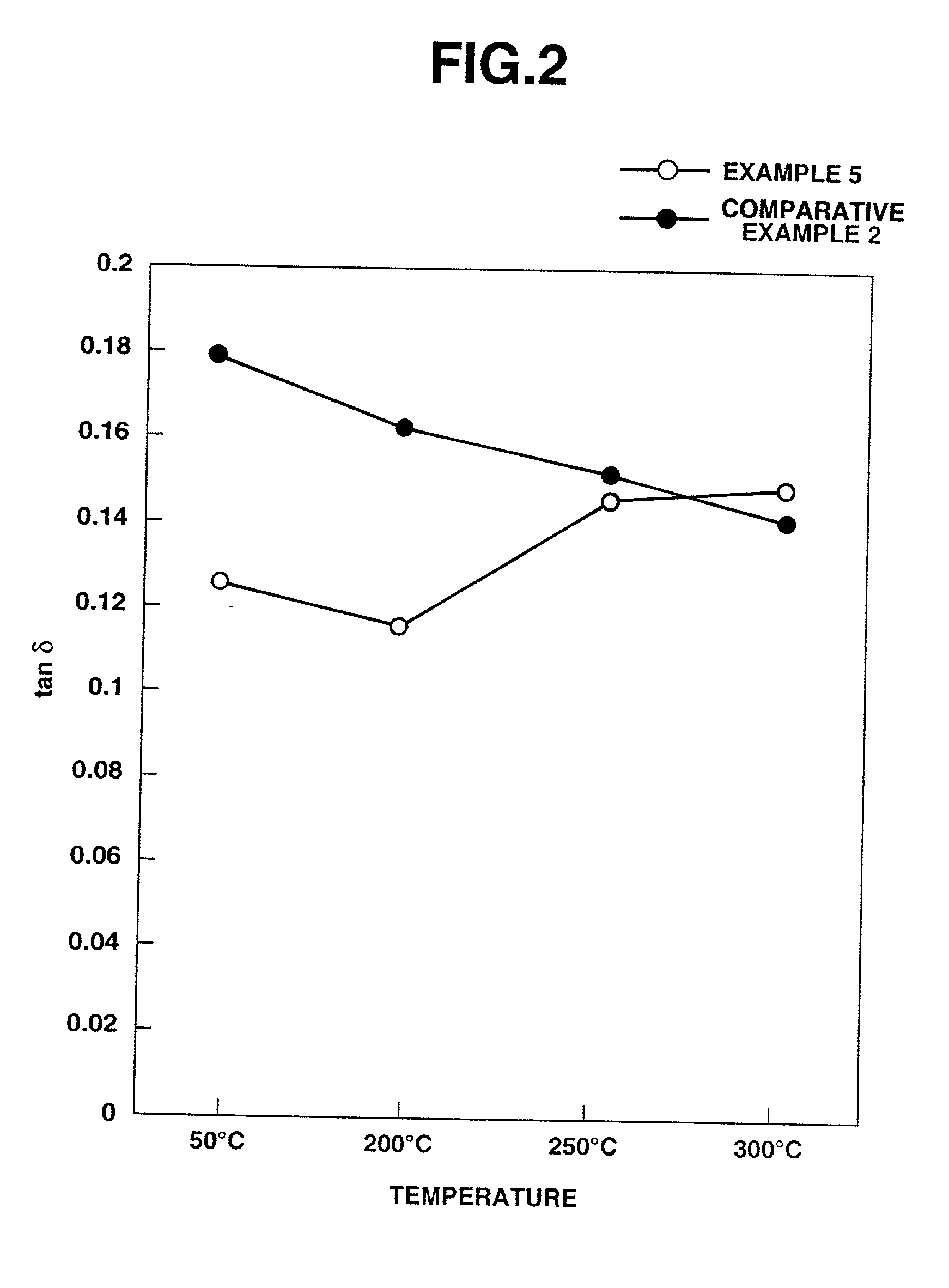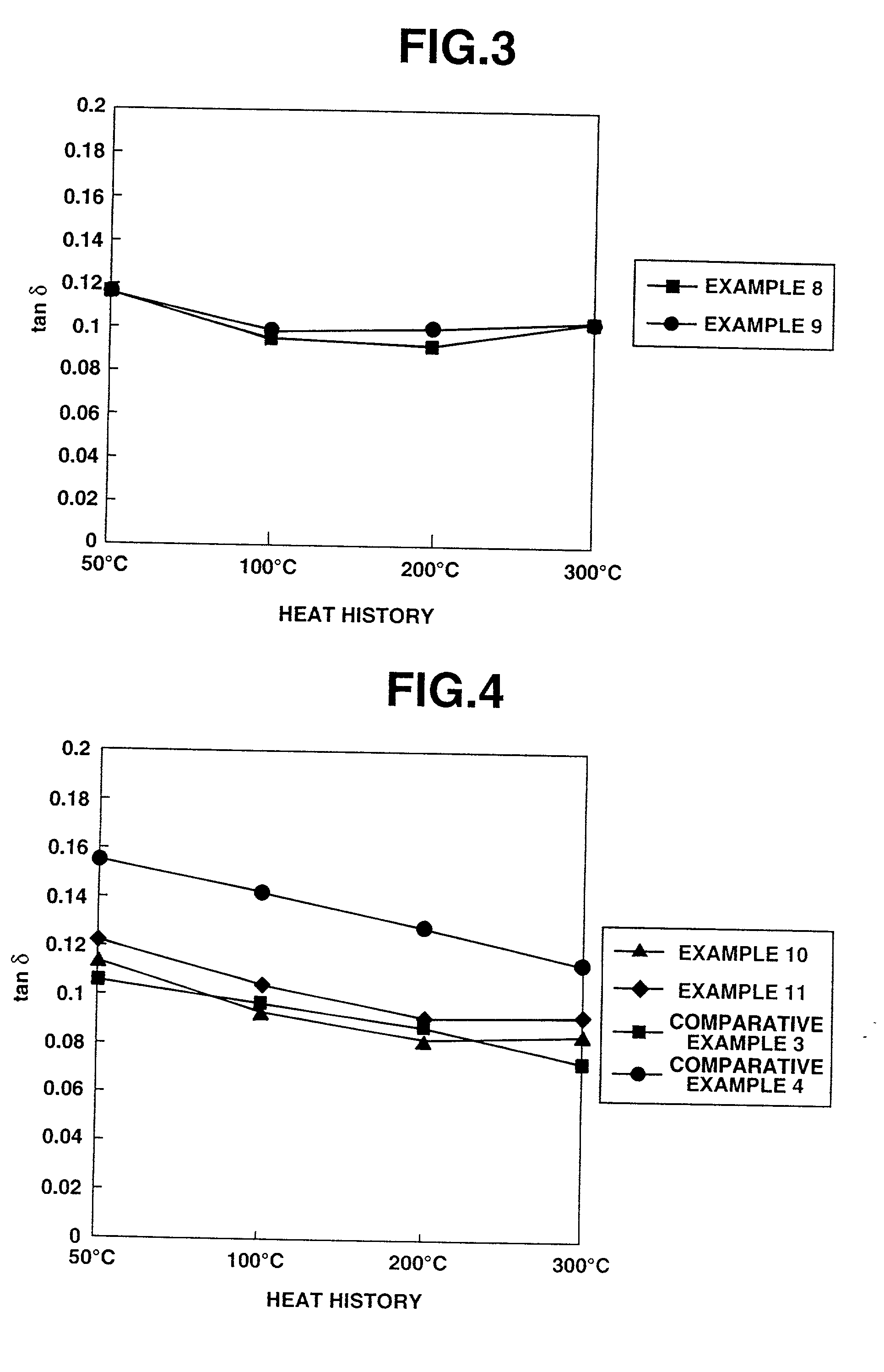Non-asbestos friction materials
a friction material and non-asbestos technology, applied in the field of non-asbestos friction materials, can solve the problems of poor moldability, inadequate heat resistance, and decline in braking performan
- Summary
- Abstract
- Description
- Claims
- Application Information
AI Technical Summary
Benefits of technology
Problems solved by technology
Method used
Image
Examples
examples 8 and 9
[0071] The friction material compositions shown in Table 5 were formulated in the proportions indicated, and uniformly mixed using a Lodige mixer. The compositions were then preformed in a pressure mold under a pressure of 100 kg / cm.sup.2 for a period of 1 minute. The preforms were molded for the desired length of time at a temperature of 145.degree. C. and a pressure of 180 kg / cm.sup.2, then heat treated or postcured at 180.degree. C. for 5 hours. This procedure yielded friction materials in the respective examples.
5 TABLE 5 Ex 8 Ex 9 Formulation Aramid fibers 7 7 Glass fibers 7 7 Cashew dust 17 17 Calcium carbonate 13 13 Barium sulfate 21 21 Graphite 7 7 Copper powder 17 17 NBR-modified high-ortho 5.5 8.5 phenolic resin.sup.1 Acrylic rubber-modified 5.5 2.5 phenolic novolac resin.sup.2 Total (% by weight) 100 100 Performance Short-time moldability Good Exc Noise performance Good Exc Functional stability Exc Good Fade resistance Exc Good .sup.1NBR-modified high-ortho phenolic resin...
PUM
| Property | Measurement | Unit |
|---|---|---|
| temperature | aaaaa | aaaaa |
| temperature | aaaaa | aaaaa |
| temperature | aaaaa | aaaaa |
Abstract
Description
Claims
Application Information
 Login to View More
Login to View More - R&D
- Intellectual Property
- Life Sciences
- Materials
- Tech Scout
- Unparalleled Data Quality
- Higher Quality Content
- 60% Fewer Hallucinations
Browse by: Latest US Patents, China's latest patents, Technical Efficacy Thesaurus, Application Domain, Technology Topic, Popular Technical Reports.
© 2025 PatSnap. All rights reserved.Legal|Privacy policy|Modern Slavery Act Transparency Statement|Sitemap|About US| Contact US: help@patsnap.com



